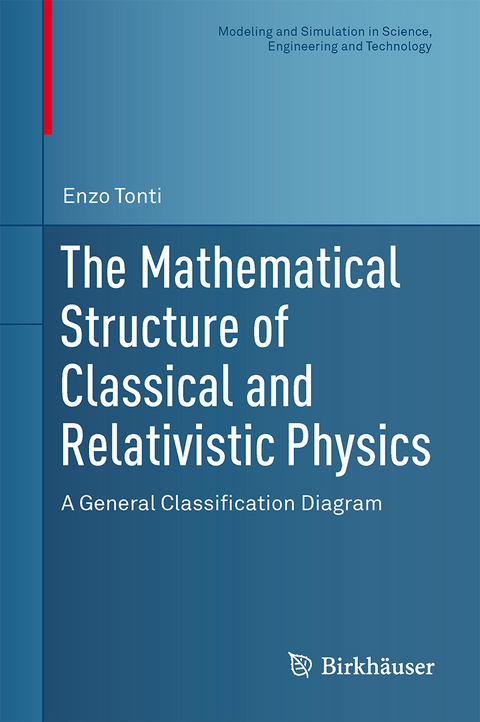The Mathematical Structure of Classical and Relativistic Physics
Birkhauser Boston Inc (Verlag)
978-1-4614-7421-0 (ISBN)
The theories describing seemingly unrelated areas of physics have surprising analogies that have aroused the curiosity of scientists and motivated efforts to identify reasons for their existence. Comparative study of physical theories has revealed the presence of a common topological and geometric structure. The Mathematical Structure of Classical and Relativistic Physics is the first book to analyze this structure in depth, thereby exposing the relationship between (a) global physical variables and (b) space and time elements such as points, lines, surfaces, instants, and intervals. Combining this relationship with the inner and outer orientation of space and time allows one to construct a classification diagram for variables, equations, and other theoretical characteristics.
The book is divided into three parts. The first introduces the framework for the above-mentioned classification, methodically developing a geometric and topological formulation applicable to all physical laws and properties; the second applies this formulation to a detailed study of particle dynamics, electromagnetism, deformable solids, fluid dynamics, heat conduction, and gravitation. The third part further analyses the general structure of the classification diagram for variables and equations of physical theories.
Suitable for a diverse audience of physicists, engineers, and mathematicians, The Mathematical Structure of Classical and Relativistic Physics offers a valuable resource for studying the physical world. Written at a level accessible to graduate and advanced undergraduate students in mathematical physics, the book can be used as a research monograph across various areas of physics, engineering and mathematics, and as a supplemental text for a broad range of upper-levelscientific coursework.
Enzo Tonti is a professor at Universita di Trieste.
1 Introduction.- Part I Analysis of variables and equations.- 2 Terminology revisited.- 3 Space and time elements and their orientation.- 4 Cell complexes.- 5 Analysis of physical variables.- 6 Analysis of physical equations.- 7 Algebraic topology.- 8 The birth of the classification diagrams.- Part II Analysis of physical theories.- 9 Particle dynamics.- 10 Electromagnetism.- 11 Mechanics of deformable solids.- 12 Mechanics of fluids.- 13 Other physical theories.- Part III Advanced analysis.- 14 General structure of the diagrams.- 15 The mathematical structure.- Part IV Appendices.- A Affine vector fields.- B Tensorial notation.- C On observable quantities.- D History of the diagram.- D.1 Historical remarks.- E List of physical variables.- F List of symbols used in this book.- G List of diagrams.- References.
| Erscheint lt. Verlag | 7.9.2013 |
|---|---|
| Reihe/Serie | Modeling and Simulation in Science, Engineering and Technology |
| Zusatzinfo | 164 Illustrations, color; XXXVI, 514 p. 164 illus. in color. |
| Verlagsort | Secaucus |
| Sprache | englisch |
| Maße | 155 x 235 mm |
| Themenwelt | Mathematik / Informatik ► Mathematik ► Analysis |
| Mathematik / Informatik ► Mathematik ► Angewandte Mathematik | |
| Mathematik / Informatik ► Mathematik ► Geometrie / Topologie | |
| Naturwissenschaften ► Physik / Astronomie ► Theoretische Physik | |
| Schlagworte | applied partial differential equations • Diffusion • electromagnetism • gravitation theory • mathematical structure • physical theories • physical variables • Physik • solid deformation • Thermal Conduction |
| ISBN-10 | 1-4614-7421-3 / 1461474213 |
| ISBN-13 | 978-1-4614-7421-0 / 9781461474210 |
| Zustand | Neuware |
| Informationen gemäß Produktsicherheitsverordnung (GPSR) | |
| Haben Sie eine Frage zum Produkt? |
aus dem Bereich




